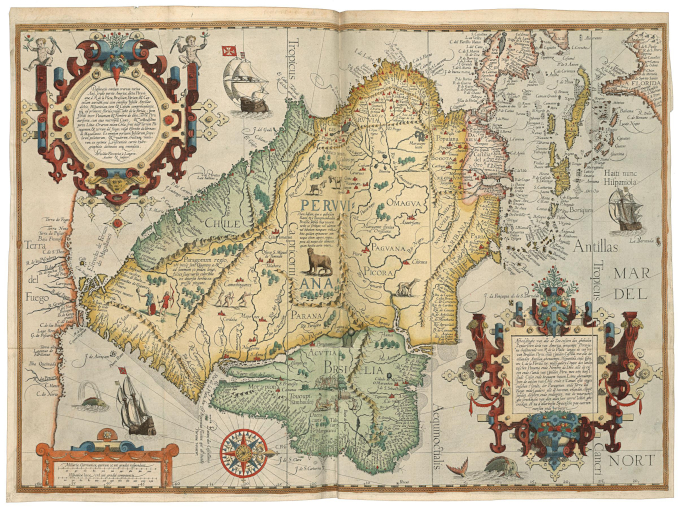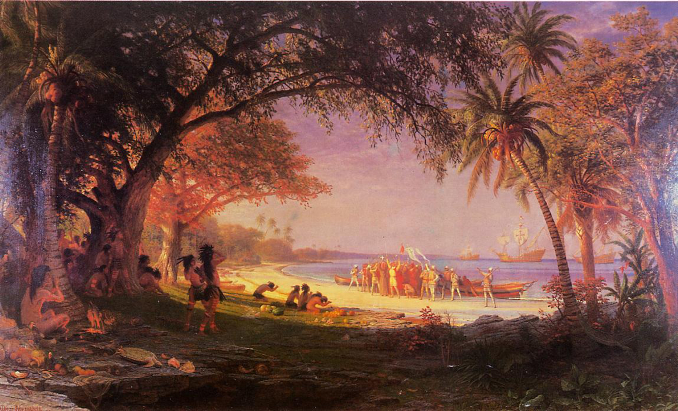
By Nina Heyn — Your Culture Scout
“The discovery of America, and that of a passage to the East Indies by the Cape of Good Hope, are the two greatest and most important events recorded in the history of mankind.” ~ Adam Smith in An Inquiry into the Nature and Causes of the Wealth of Nations

It is unlikely that the landing of Christopher Columbus in the New World looked as relaxed as illustrated by the 19th-century German landscape artist Albert Bierstadt. It is nonetheless an evocative rendition of a historic moment in global trade—the beginning of European access to the untapped natural resources of the Americas—including minerals and metals, plants and animals, human labor, and arable land. Everything that was becoming scarce in overpopulated Europe, or inaccessible due to wars with the Ottoman empire and Asian tribes, was suddenly able to be sourced in abundance in a different part of the world. However, for people who already occupied those lands, so serenely (and inaccurately) portrayed in Bierstadt’s painting, this was the beginning of a genocide. Entire nations and tribes would soon start disappearing—annihilated by occupation and enslavement but also by viral and bacterial onslaught brought through sudden biological contact.
views: 2
